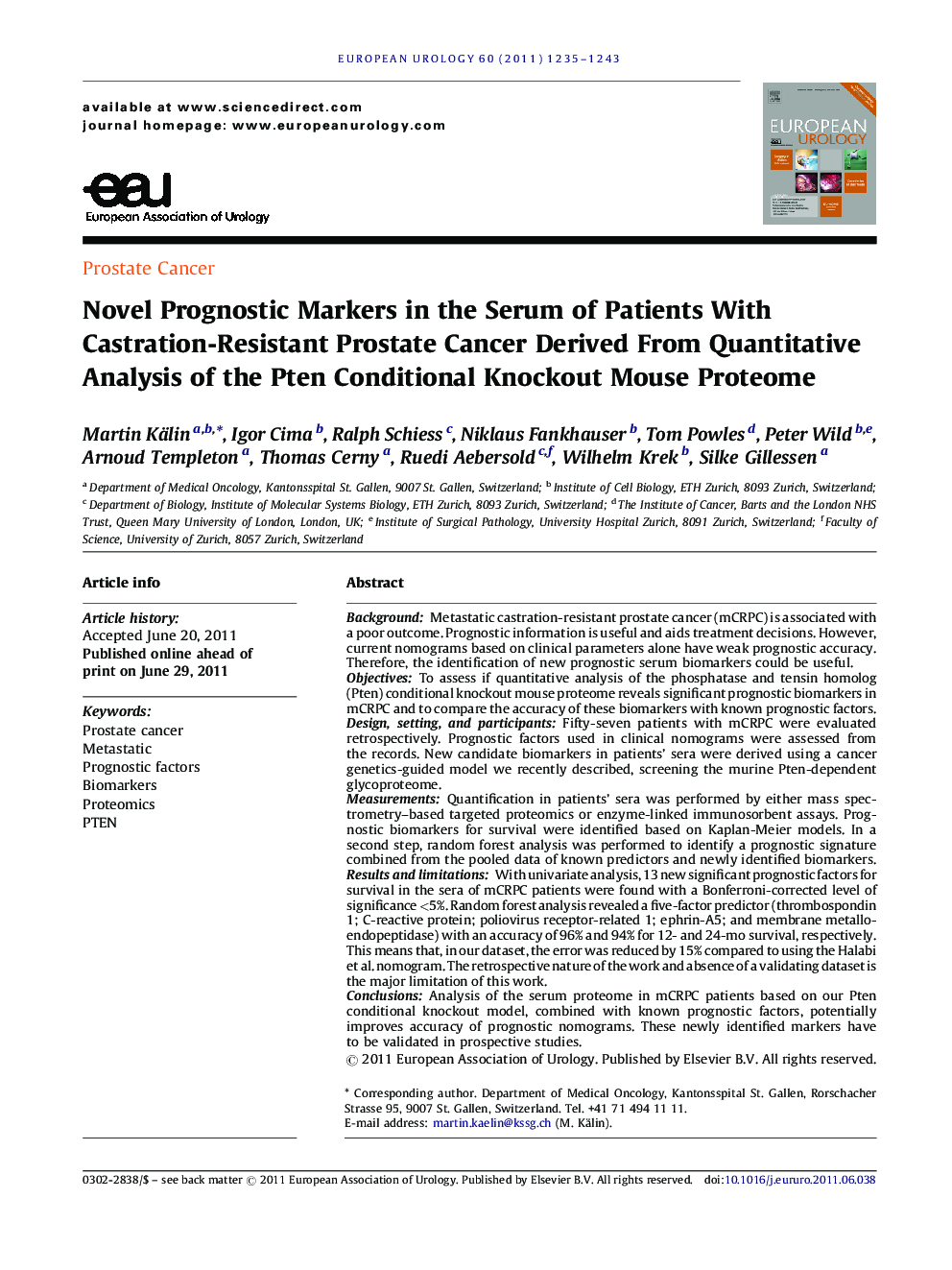| Article ID | Journal | Published Year | Pages | File Type |
|---|---|---|---|---|
| 3922951 | European Urology | 2011 | 9 Pages |
BackgroundMetastatic castration-resistant prostate cancer (mCRPC) is associated with a poor outcome. Prognostic information is useful and aids treatment decisions. However, current nomograms based on clinical parameters alone have weak prognostic accuracy. Therefore, the identification of new prognostic serum biomarkers could be useful.ObjectivesTo assess if quantitative analysis of the phosphatase and tensin homolog (Pten) conditional knockout mouse proteome reveals significant prognostic biomarkers in mCRPC and to compare the accuracy of these biomarkers with known prognostic factors.Design, setting, and participantsFifty-seven patients with mCRPC were evaluated retrospectively. Prognostic factors used in clinical nomograms were assessed from the records. New candidate biomarkers in patients’ sera were derived using a cancer genetics-guided model we recently described, screening the murine Pten-dependent glycoproteome.MeasurementsQuantification in patients’ sera was performed by either mass spectrometry–based targeted proteomics or enzyme-linked immunosorbent assays. Prognostic biomarkers for survival were identified based on Kaplan-Meier models. In a second step, random forest analysis was performed to identify a prognostic signature combined from the pooled data of known predictors and newly identified biomarkers.Results and limitationsWith univariate analysis, 13 new significant prognostic factors for survival in the sera of mCRPC patients were found with a Bonferroni-corrected level of significance <5%. Random forest analysis revealed a five-factor predictor (thrombospondin 1; C-reactive protein; poliovirus receptor-related 1; ephrin-A5; and membrane metallo-endopeptidase) with an accuracy of 96% and 94% for 12- and 24-mo survival, respectively. This means that, in our dataset, the error was reduced by 15% compared to using the Halabi et al. nomogram. The retrospective nature of the work and absence of a validating dataset is the major limitation of this work.ConclusionsAnalysis of the serum proteome in mCRPC patients based on our Pten conditional knockout model, combined with known prognostic factors, potentially improves accuracy of prognostic nomograms. These newly identified markers have to be validated in prospective studies.
